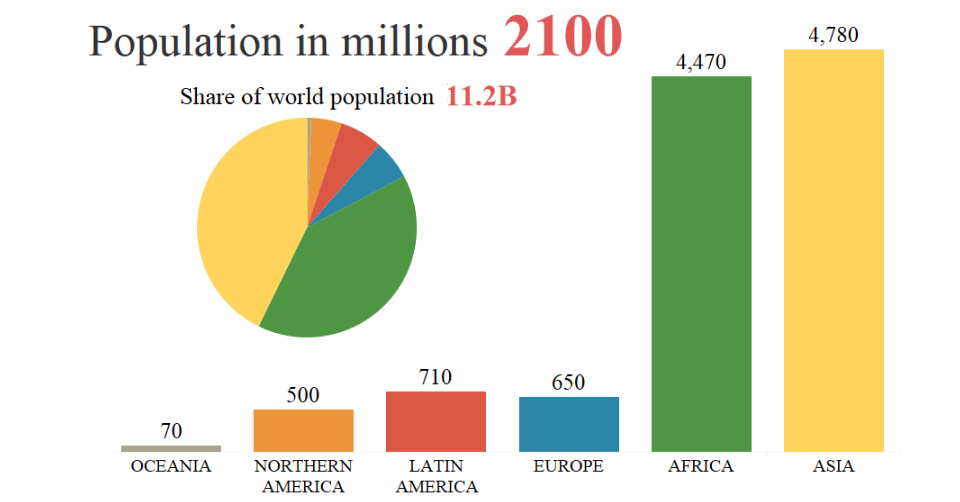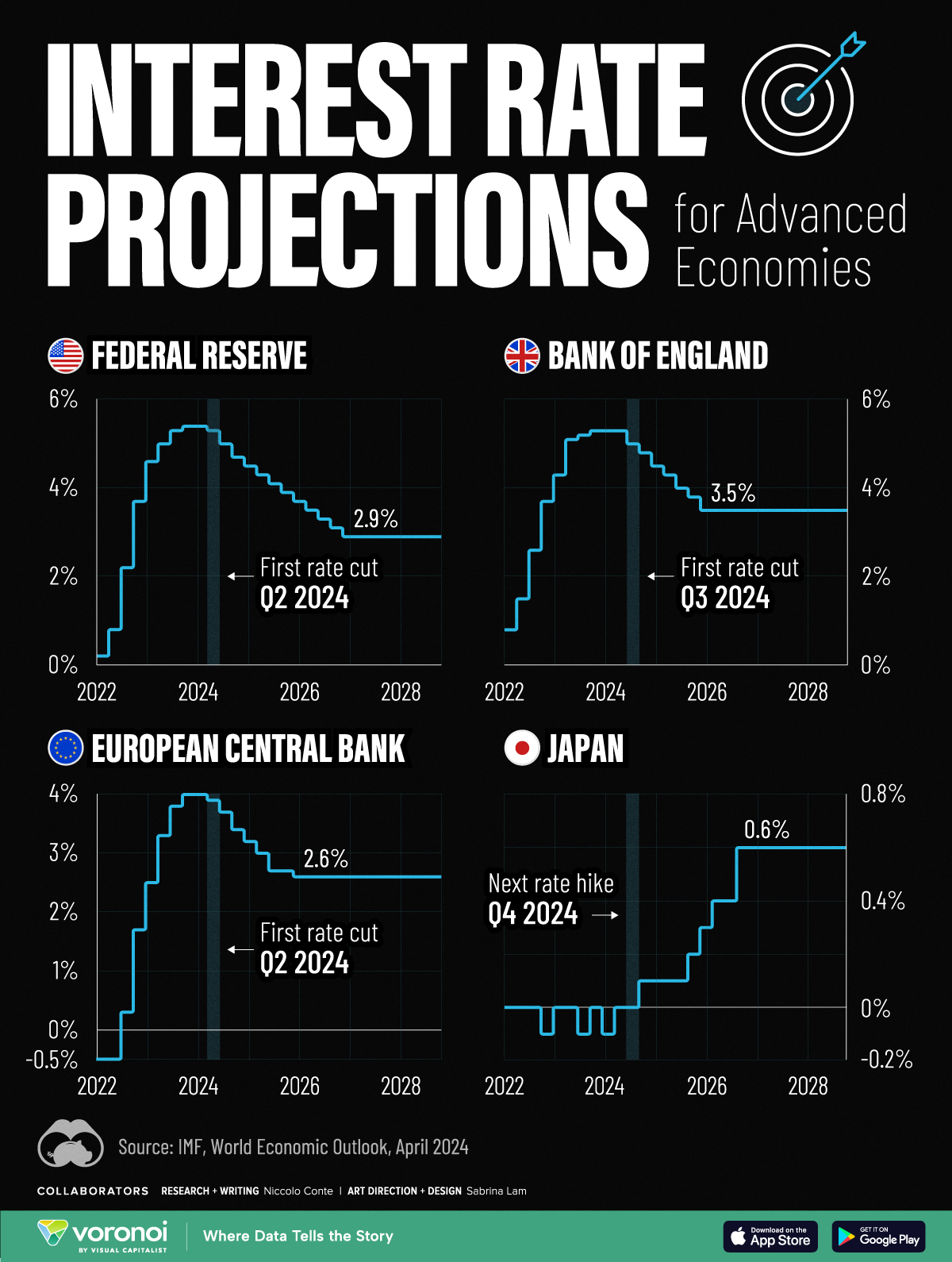Markets
Animation: Global Population by Region From 1950 to 2100
According to the most recent projections by the United Nations, the global population will rise from 7.6 billion to 11.2 billion people by 2100.
At this macro level, the global population is growing considerably – but at the micro level, the numbers are all over the map. It’s expected that some countries like Nigeria will see population numbers quadruple by 2100, while other places like China will see a decline by almost 40%.
This raises the question: how different do the regions of the world look in 80 years, in terms of population?
Population by Region (1950-2100)
Today’s animation comes to us from geographer Simon Kuestenmacher who used this U.N. data to show how population by region is expected to change over the coming years.
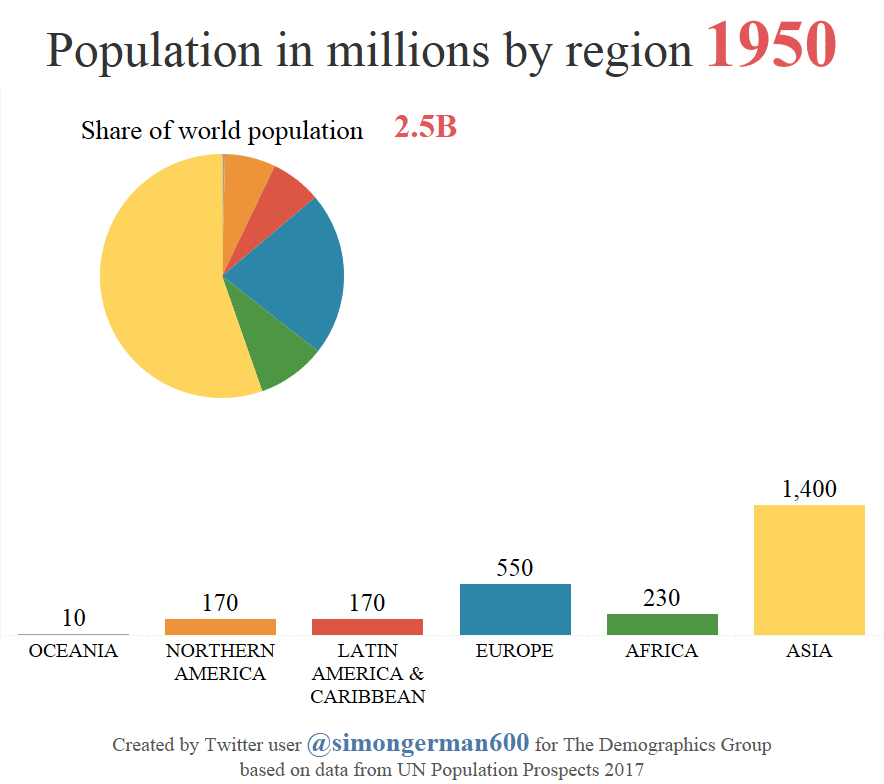
The chart shows expansive population growth in Asia until about 2060, which is when the regional population will peak at roughly 5.3 billion. At this point, the continent will make up 51% of the global population.
In addition, Africa’s population is projected to continue to boom until 2100, at which point it will come close to passing Asia’s total. As we previously showed you, Africa will also be home to many of the world’s largest cities by this time.
Factors of Influence
Although 83 million people are being added to the global population every year, this population growth differs greatly by region. As a result, it’s worth looking at two major factors to see why this is the case.
The first is the fertility rate, which has obvious implications on population growth. On a global basis, this rate (measured in births per woman) is close to 2.5, and by 2100 it will have dropped to 2.0.
However, as you’ll see in this next chart, which shows projected fertility rates, Africa is the only region that will still have high amounts of child births 30 years from now. This will be one major driver of the continent’s population boom.
Total Fertility in 2050 (Live births per woman)
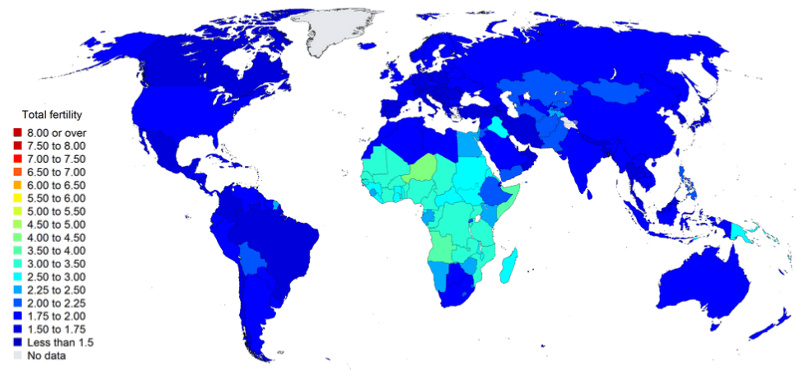
The second measure that plays a big role in these projections is life expectancy. For each new person born, how long are they expected to live?
Until recently, the only countries that had a life expectancy that exceeded 80 years were in Western Europe, North America, and Oceania, with the notable exception of Japan. However, in the coming decades, even the world’s least developed countries will all be closing in on that same benchmark:
Life Expectancy in 2100 (Years at birth)
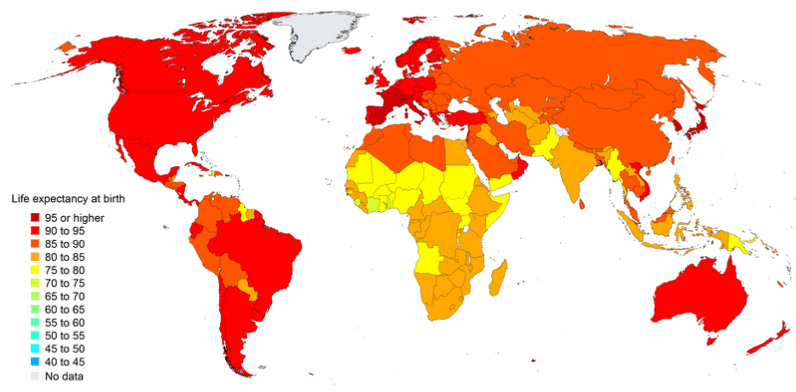
The Next 30 Years
According to these same estimates, it is expected between 2017-2050 that half of all global population growth will be in just nine countries (in this order): India, Nigeria, DRC, Pakistan, Ethiopia, Tanzania, United States, Uganda, and Indonesia.
Over that duration of time, it’s also projected that the populations of 26 African countries will at least double.
Markets
Visualized: Interest Rate Forecasts for Advanced Economies
In this graphic, we show the IMF’s interest rate forecast for the U.S., Europe, the UK, and Japan for the next five years ahead.
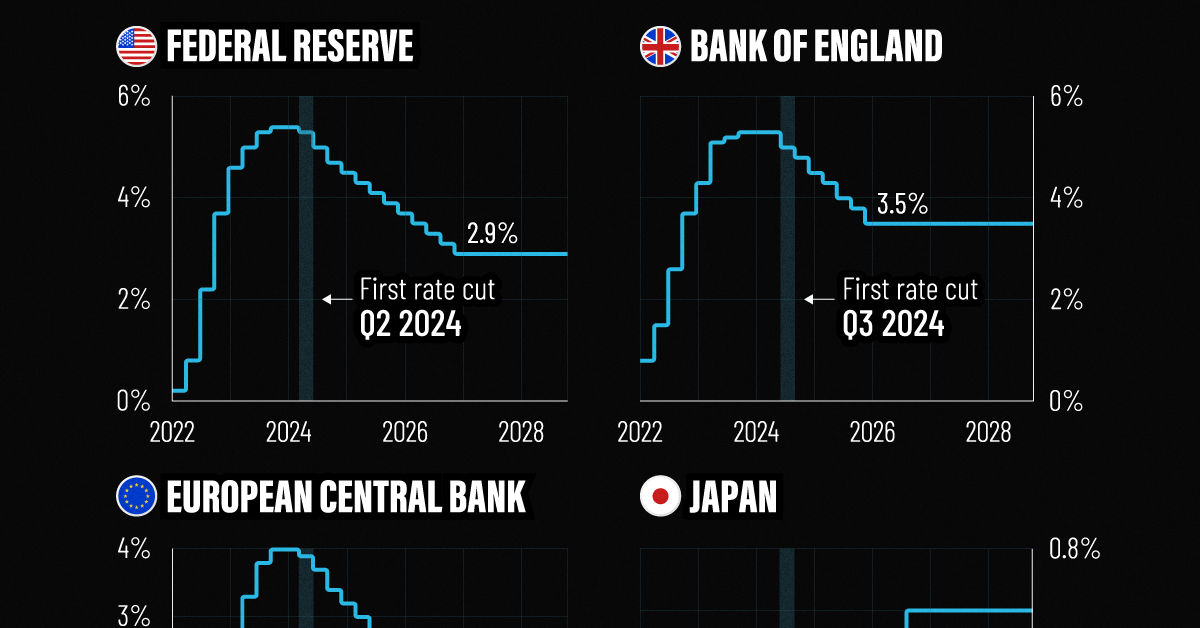
Interest Rate Projections for Advanced Economies
While U.S. inflation cooled in the second half of last year, price pressures returned in 2024, leading investors to rethink how soon central bankers will cut rates.
Despite the recent increase, the interest rate forecast for many economies looks optimistic, thanks to subdued energy price shocks and abating supply chain disruptions. Still, short-term risks remain, including persistently high services inflation clouding the outlook.
This graphic shows the interest rate forecast for advanced economies, based on the International Monetary Fund’s (IMF) 2024 World Economic Outlook.
Get the Key Insights of the IMF’s World Economic Outlook
Want a visual breakdown of the insights from the IMF’s 2024 World Economic Outlook report?
This visual is part of a special dispatch of the key takeaways exclusively for VC+ members.
Get the full dispatch of charts by signing up to VC+.
A Closer Look at the IMF Interest Rate Forecast
Below, we show the projected path of interest rates based on the IMF’s latest data:
| Federal Reserve | Bank of England | ECB | Bank of Japan | |
|---|---|---|---|---|
| Q1 2024 | 5.4% | 4.0% | -0.1% | 5.3% |
| Q2 2024 | 5.3% | 3.9% | 0.0% | 5.3% |
| Q3 2024 | 5.0% | 3.7% | 0.0% | 5.0% |
| Q4 2024 | 4.7% | 3.4% | 0.1% | 4.8% |
| Q1 2025 | 4.5% | 3.2% | 0.1% | 4.5% |
| Q2 2025 | 4.3% | 3.0% | 0.1% | 4.3% |
| Q3 2025 | 4.1% | 2.7% | 0.1% | 4.0% |
| Q4 2025 | 3.9% | 2.7% | 0.2% | 3.8% |
| Q1 2026 | 3.7% | 2.6% | 0.3% | 3.5% |
| Q2 2026 | 3.5% | 2.6% | 0.4% | 3.5% |
| Q3 2026 | 3.3% | 2.6% | 0.4% | 3.5% |
| Q4 2026 | 3.1% | 2.6% | 0.6% | 3.5% |
| Q1 2027 | 2.9% | 2.6% | 0.6% | 3.5% |
| Q2 2027 | 2.9% | 2.6% | 0.6% | 3.5% |
| Q3 2027 | 2.9% | 2.6% | 0.6% | 3.5% |
| Q4 2027 | 2.9% | 2.6% | 0.6% | 3.5% |
| Q1 2028 | 2.9% | 2.6% | 0.6% | 3.5% |
| Q2 2028 | 2.9% | 2.6% | 0.6% | 3.5% |
| Q3 2028 | 2.9% | 2.6% | 0.6% | 3.5% |
| Q4 2028 | 2.9% | 2.6% | 0.6% | 3.5% |
As we can see, the U.S. is forecast to see its first rate cut in the second quarter of 2024.
Broadly speaking, rates will be cut very gradually, with two additional rate cuts anticipated for this year. By 2027, interest rates are projected to fall to 2.9% after a series of moderate rate cuts as inflation dissipates.
Like the U.S., the European Central Bank is forecast to cut rates in the second quarter of 2024, with rates set to fall to 2.6% by 2026. While inflation has cooled at a faster rate across Europe compared to the U.S., GDP growth is also projected to be more muted. This year, the IMF projects that GDP across the euro area will increase just 0.8% versus 2.7% for the U.S. economy.
In the UK, monetary easing is projected to move more gradually, with the first cut projected for the third quarter of this year. Growth across the UK economy is projected to be tepid for 2024, weighed down by the impact of higher rates, lower productivity, and sluggish investment growth.
Rates Rising Slowly in Japan
After years of enduring negative interest rates, Japan raised its short-term policy rate to 0.0-0.1% in March 2024.
This was due in part to a promising inflation outlook over the coming years. The IMF projects that the next rate hike will take place in the fourth quarter of 2024, as it moves away from a multi-decade battle with deflation.
Get the Full Analysis of the IMF’s Outlook on VC+
This visual is part of an exclusive special dispatch for VC+ members which breaks down the key takeaways from the IMF’s 2024 World Economic Outlook.
For the full set of charts and analysis, sign up for VC+.
-

 Wealth6 days ago
Wealth6 days agoCharted: Which City Has the Most Billionaires in 2024?
-

 Mining2 weeks ago
Mining2 weeks agoGold vs. S&P 500: Which Has Grown More Over Five Years?
-

 Uranium2 weeks ago
Uranium2 weeks agoThe World’s Biggest Nuclear Energy Producers
-

 Education2 weeks ago
Education2 weeks agoHow Hard Is It to Get Into an Ivy League School?
-

 Debt2 weeks ago
Debt2 weeks agoHow Debt-to-GDP Ratios Have Changed Since 2000
-

 Sports2 weeks ago
Sports2 weeks agoThe Highest Earning Athletes in Seven Professional Sports
-

 Science2 weeks ago
Science2 weeks agoVisualizing the Average Lifespans of Mammals
-

 Brands1 week ago
Brands1 week agoHow Tech Logos Have Evolved Over Time

